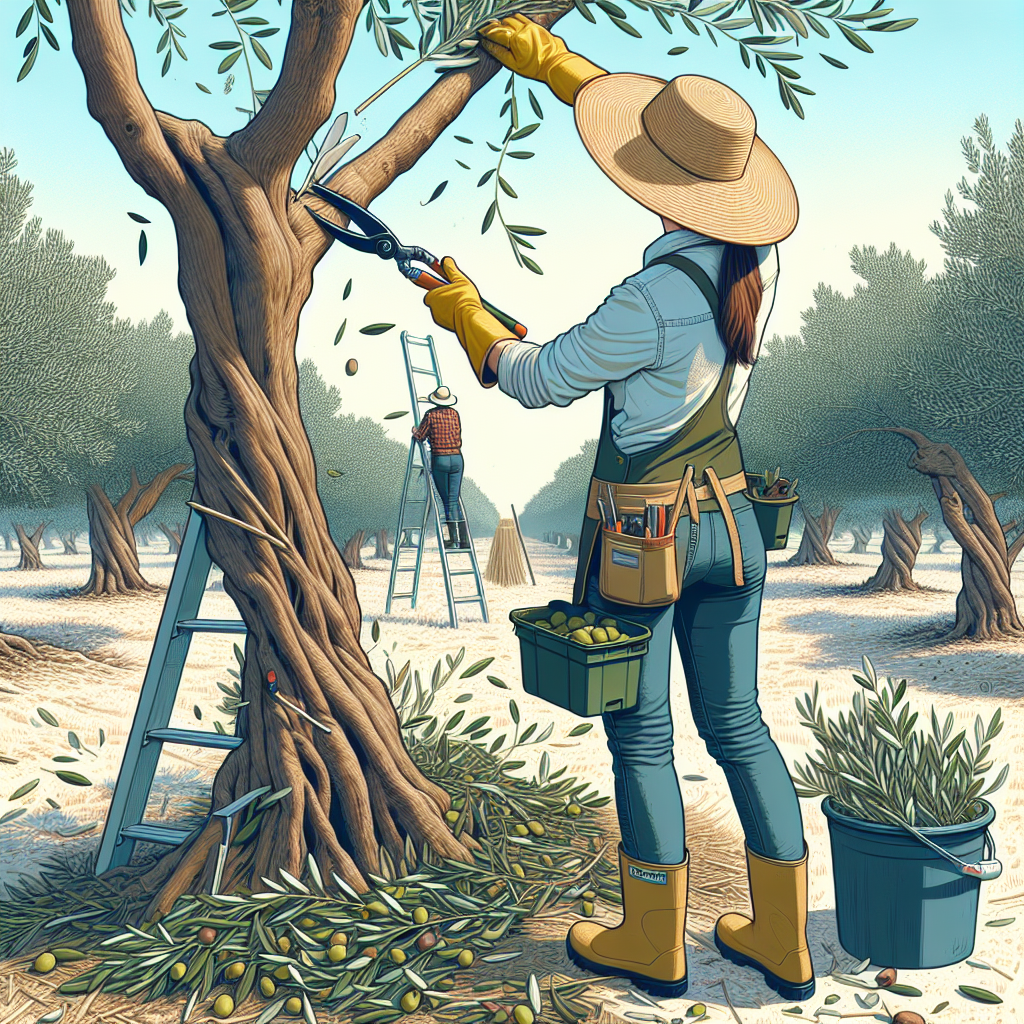
How to trim olive trees
How to Trim Olive Trees: A Comprehensive Guide
Olive trees are not only beautiful but also beneficial, providing delicious olives and enhancing the aesthetic appeal of gardens and landscapes. Trimming them is essential for their health and productivity. In this article, we will discuss the best practices, techniques, and tips on how to trim olive trees effectively, ensuring optimal growth and fruit production.
Understanding the Importance of Trimming Olive Trees
Before diving into the specifics of how to trim olive trees, it is crucial to understand why trimming is essential. Regular pruning can lead to better air circulation and light penetration in the tree's canopy, which promotes healthy growth and fruit production. Additionally, trimming allows you to:
- Remove dead or diseased branches.
- Improve the tree's shape and structure.
- Enhance fruit yield and quality.
- Facilitate easier harvesting.
- Prevent overcrowding and competition for resources.
When to Trim Olive Trees
Timing is key when it comes to effective pruning. The best time to trim olive trees is during late spring or early summer, just before the tree begins its growth cycle. This timing allows the tree to heal quickly and minimizes stress. However, it is also important to avoid trimming during:
- Extreme cold weather, which can damage the tree.
- Rainy seasons, as wet conditions can lead to infections and disease.
- Fruit-bearing seasons, to ensure that the tree focuses its energy on producing olives.
Signs That Your Olive Trees Need Trimming
Recognizing when your olive trees require trimming is vital for their health. Look for these signs:
- Overly dense canopy with poor air circulation.
- Dead, damaged, or diseased branches.
- Excessive growth in a specific direction (leaning).
- Low fruit production or poor quality fruit.
Tools Needed for Pruning Olive Trees
Having the right tools can make the process of trimming more efficient and effective. Here are some essential tools you will need:
- Hand pruners: Ideal for cutting small branches.
- Loppers: Useful for branches that are thicker and out of reach.
- Pruning saw: Necessary for larger limbs and branches.
- Gloves: To protect your hands while working.
- Safety goggles: To protect your eyes from falling debris.
Steps to Trim Olive Trees Effectively
Now, let’s delve into the step-by-step process of how to trim olive trees.
Step 1: Assess the Tree
Before beginning, take a moment to assess the overall health of your olive tree. Look for signs of disease or damage, and identify areas that may need special attention. This assessment will help you create a plan for pruning.
Step 2: Start with the Dead and Diseased Branches
Begin pruning by removing any dead, damaged, or diseased branches. Cut these branches at the point where they connect to a healthy limb. This not only helps to improve the tree's aesthetics but also prevents the spread of disease.
Step 3: Improve Structure and Shape
Next, focus on shaping the tree. Aim for an open center to enhance air circulation. Follow these guidelines:
- Remove any suckers or branches that grow towards the center.
- Trim any branches that cross or rub against one another.
- Maintain a balanced shape by pruning uneven growth.
Step 4: Thin the Canopy
To allow sunlight to penetrate and air to circulate, thin the canopy of the tree. This involves removing some of the smaller branches and leaves from the outer edges without removing too much foliage. Aim for a canopy that allows sunlight to reach the inner branches.
Step 5: Final Touches
After thinning, assess if there are any remaining problematic branches and remove them. Also, step back frequently to evaluate the overall shape and structure of the tree. Gradually work towards achieving your desired form.
Common Mistakes to Avoid When Trimming Olive Trees
Even with the best intentions, mistakes can happen. Here are some common errors to avoid:
- Over-pruning: Cutting too much can stress the tree and reduce fruit production.
- Ignoring tree health: Failing to assess the tree's health can lead to further damage.
- Bad timing: Pruning at the wrong time of year can hinder growth.
- Using dull tools: Dull tools can tear branches and invite disease.
Aftercare Following Pruning
Once you’ve finished pruning, take care of your olive trees to ensure they recover well:
- Water: Ensure the tree is well-watered, especially during dry spells.
- Fertilize: Use a balanced fertilizer to support growth.
- Monitor: Keep an eye on the tree for signs of stress or disease.
Tips for Maintaining Healthy Olive Trees
Proper care and maintenance will lead to thriving olive trees. Here are some tips to keep them healthy:
- Regularly inspect for pests and diseases.
- Maintain soil health by adding organic matter.
- Practice a seasonal watering schedule based on rainfall.
- Consider professional help for large trees or severe issues.
Conclusion
Trimming olive trees is a vital part of maintaining their health and productivity. By understanding the right times, techniques, and tools for trimming, you can promote healthy growth and a bountiful harvest. Whether you are a novice gardener or a seasoned horticulturist, following the steps outlined in this guide can help you effectively care for your olive trees. Remember, a well-trimmed olive tree not only produces better fruit but also enhances the beauty of your landscape.
By Guest, Published on October 19th, 2024